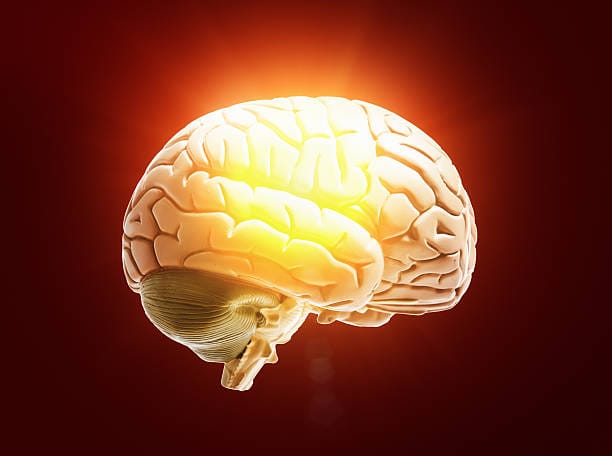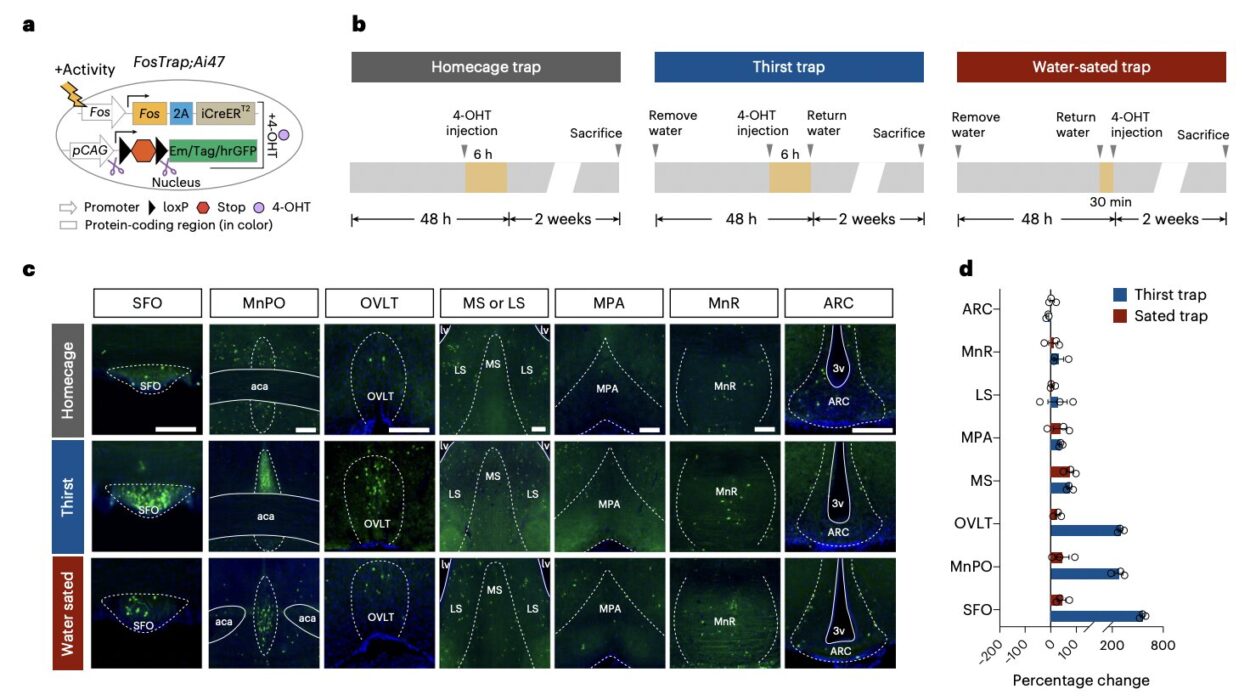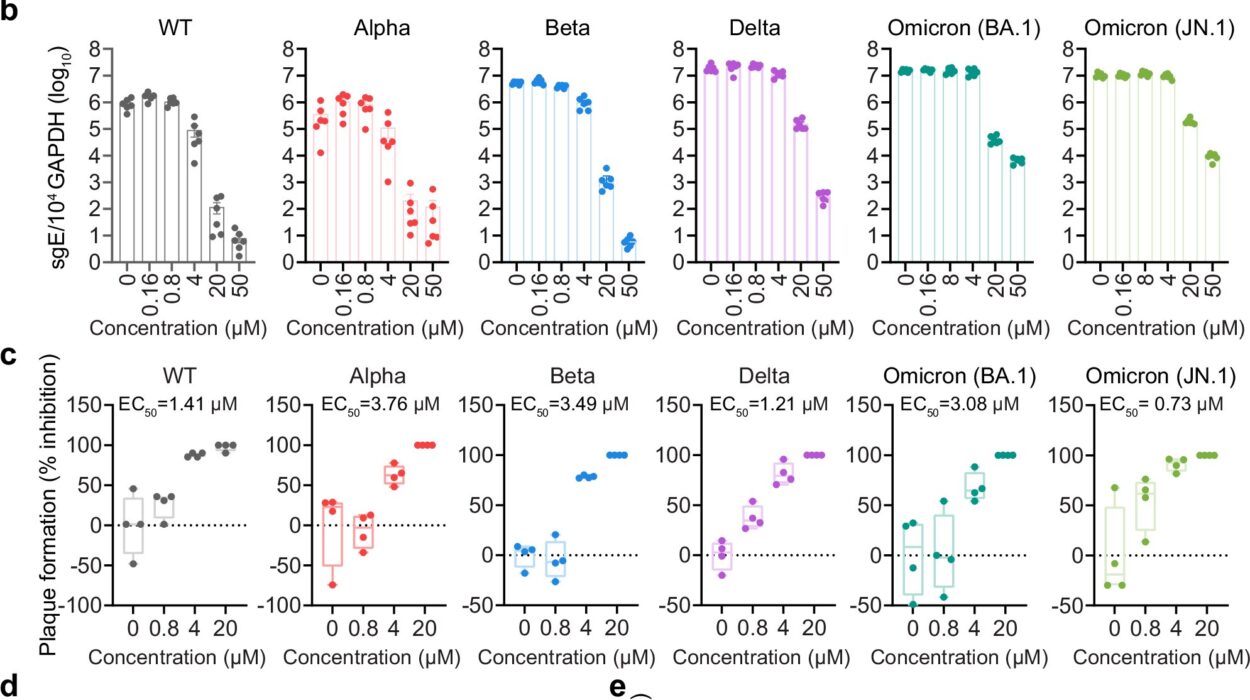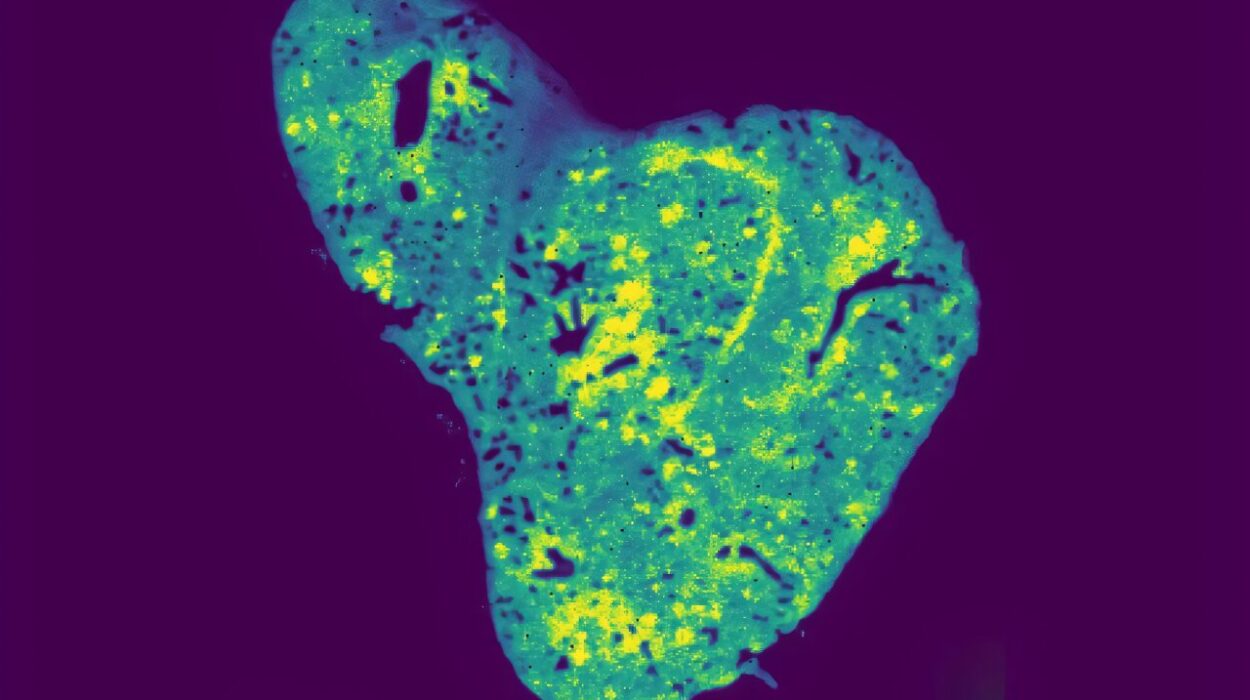Fear is a shadow that flickers in the corner of our vision. It’s the cold knot in your stomach before you speak in public, the sudden jolt when a car swerves too close, the pulse that races in the night when you hear footsteps behind you. It is ancient, primal, and vital. Fear has kept humanity alive for millions of years, shaping not only our behavior but the architecture of our brains.
But what exactly is fear? And what happens inside the human brain when we feel afraid?
This is not just a question of emotion; it’s a journey into the very core of human consciousness. Understanding how the brain processes fear opens doors to psychology, psychiatry, medicine, artificial intelligence, trauma recovery, and even philosophy. At the heart of it lies the delicate interplay between biology and survival, between instinct and reason.
Let us explore the neural symphony that is fear—a powerful, sometimes paralyzing, often protective force that dances between life and death.
Fear: Evolution’s Gift and Curse
Long before humans wrote poetry or built cities, fear was already whispering in the minds of our ancestors. It is one of the oldest emotions, deeply rooted in our evolutionary history. Every organism that moves through the world must be able to detect threats and respond quickly. This is why fear exists: to keep us safe.
When our distant ancestors wandered through forests filled with predators, the ability to freeze, flee, or fight was not optional—it was essential. The brain needed a way to assess danger quickly, sometimes before conscious thought could even catch up. Fear became that shortcut. Fast, instinctive, automatic. The tiger in the tall grass did not wait for reflection.
In this context, fear is not irrational. It is, in fact, one of the most rational responses we can have when faced with uncertainty or danger. And though the predators have changed—fewer tigers, more deadlines and wars and pandemics—the systems in the brain that once scanned for claws now scan for subtler threats. Evolution has repurposed fear to help us navigate not just the physical world, but the social, emotional, and digital landscapes we now inhabit.
The Brain’s Fear Network: A Silent Orchestra
Fear is not the work of one part of the brain but a collaboration—a neural orchestra, with different regions contributing different instruments to the symphony of survival.
At the center of this orchestra is the amygdala, an almond-shaped cluster of nuclei buried deep within the temporal lobes. The amygdala is often described as the brain’s “fear center,” but in truth, it does much more. It’s involved in emotional learning, memory, and the detection of salience—what is important, threatening, or new. When something potentially dangerous is perceived, the amygdala activates almost instantly.
But it does not act alone. The hypothalamus, just below it, acts as a command center. Once the amygdala raises the alarm, the hypothalamus sends messages through the autonomic nervous system, initiating the fight-or-flight response. This includes increasing heart rate, dilating pupils, tensing muscles, and releasing adrenaline and cortisol—hormones that prime the body for immediate action.
Meanwhile, the hippocampus, which is involved in memory and context, works to compare the current situation with past experiences. Is this really a threat, or does it just look like one? The hippocampus is what allows us to remember that a snarling dog once bit us, or that the last time we spoke in front of a crowd, we forgot our words.
Higher up, the prefrontal cortex—especially the ventromedial and dorsolateral regions—engages in rational thought. It tries to analyze the situation logically, determine whether the fear is justified, and help regulate the emotional response. It’s the part of your brain that says, “Relax, it’s just a movie,” even as your heart pounds during a horror film.
These regions don’t work in a simple chain; they communicate constantly. The process of feeling fear is not linear—it’s recursive, bidirectional, and deeply contextual.
The Speed of Survival: Two Roads to Fear
Fear is fast—almost unimaginably so. This speed is due to the brain’s ability to process sensory information through two different pathways, often called the low road and the high road.
The low road is the shortcut. Information from the senses—especially vision and hearing—is sent directly to the amygdala from the thalamus, the brain’s central relay station. This route is crude and imprecise but fast. If you see a shape on the ground that vaguely resembles a snake, your amygdala may trigger a fear response before your conscious mind even registers what you’re looking at.
The high road is slower and more analytical. The sensory information also goes from the thalamus to the sensory cortex, where it is processed in detail and sent to the amygdala only after a more accurate interpretation is made. This is the pathway that might say, “Oh, it’s just a stick,” and calm the storm of adrenaline your low road already unleashed.
This dual system means we are designed to err on the side of caution. It’s better, evolutionarily speaking, to jump at a hundred harmless shadows than to miss the one real threat. But in modern life, this system can misfire, leading to chronic anxiety, panic attacks, and phobias.
Childhood Fear: Building the Emotional Blueprint
The way we experience and process fear is shaped profoundly by our early lives. In childhood, the fear system is under construction. Infants are born with a few basic fears—loud noises, sudden drops—but most fears are learned through experience or observation.
A child who touches a hot stove learns quickly to fear heat. A child who watches a parent panic at spiders may internalize that fear without direct experience. The amygdala and hippocampus are especially plastic during development, meaning that early fear experiences can leave deep imprints.
Unfortunately, trauma in childhood can hardwire the brain to be hyper-responsive to threats. Abuse, neglect, or chronic stress can result in an overactive amygdala and underdeveloped prefrontal regulation. These changes can persist into adulthood, predisposing individuals to anxiety disorders, PTSD, or emotional dysregulation.
But the brain also has remarkable capacity for resilience. With time, support, and safe environments, children can rewire their fear responses. This neuroplasticity is a source of hope, not just in childhood, but throughout life.
Phobias and Panic: When Fear Becomes a Cage
Fear is natural. But when it becomes overwhelming, irrational, or persistent in the absence of true threat, it crosses into pathology.
Phobias are intense fears of specific objects or situations—heights, spiders, flying, needles. These fears are disproportionate to the actual danger posed but can trigger real physiological responses. Research shows that phobias may involve heightened activity in the amygdala and a disconnect with the prefrontal cortex’s rational regulation. In essence, the fear network becomes “hijacked.”
Panic attacks are even more dramatic. They involve sudden, acute episodes of intense fear or terror, often accompanied by chest pain, shortness of breath, dizziness, and a sense of impending doom. These episodes can occur without an obvious trigger and may be linked to dysregulation in the brain’s fear circuits, especially involving the locus coeruleus, a brainstem region that releases norepinephrine.
Treatments like cognitive behavioral therapy (CBT) aim to rebuild the bridges between rational thought and emotional response. Exposure therapy, for example, gently introduces a person to the feared object or situation in a safe context, helping to rewire the amygdala’s associations through repeated learning.
Medication, such as SSRIs (selective serotonin reuptake inhibitors) or benzodiazepines, can also modulate the brain’s chemical environment, reducing excessive fear responses. However, medication alone rarely resolves the underlying patterns—because fear is not just chemistry; it is memory, emotion, and habit intertwined.
PTSD and Trauma: When Fear Refuses to Fade
One of the most devastating ways fear can entrench itself in the brain is through post-traumatic stress disorder (PTSD). In PTSD, the brain’s fear response becomes “stuck.” Even long after the traumatic event has ended, the brain continues to react as though the danger is still present.
People with PTSD often experience flashbacks, nightmares, hypervigilance, and emotional numbness. Neuroimaging studies reveal that individuals with PTSD often have hyperactive amygdalae, reduced hippocampal volume, and dysfunctional prefrontal-amygdala connectivity. In essence, the threat detection system is turned up, while the rational regulation system is turned down.
Trauma also disrupts the brain’s memory systems. Instead of being properly encoded as past events, traumatic memories may remain vivid, raw, and fragmented. Sounds, smells, or sensations can trigger full-body responses.
Effective treatments include eye movement desensitization and reprocessing (EMDR), trauma-focused CBT, and increasingly, psychedelic-assisted therapy using substances like MDMA in controlled settings. These approaches aim to reprocess traumatic memories and rebuild neural balance between fear and safety.
The Chemistry of Fear: Hormones and Neurotransmitters
Fear is not just a psychological phenomenon—it is deeply chemical. The brain communicates using neurotransmitters, and the body responds using hormones. These substances amplify, suppress, or modulate the experience of fear.
Adrenaline (epinephrine) is the hormone most famously associated with fear. Released by the adrenal glands, it increases heart rate, dilates airways, and boosts blood flow to muscles. It’s what makes you feel alert and shaky when afraid.
Cortisol, another adrenal hormone, has a slower but longer-lasting effect. It helps mobilize energy, modulates immune function, and supports the brain’s memory consolidation—especially of emotional events.
Norepinephrine, released in the brain by the locus coeruleus, increases alertness and arousal, helping you focus on the threat.
On the other hand, gamma-aminobutyric acid (GABA) is an inhibitory neurotransmitter that reduces neural excitability. Medications that enhance GABA activity, like benzodiazepines, are commonly used to treat anxiety and panic.
Serotonin and dopamine also play complex roles in mood, fear regulation, and reward learning. Imbalances in these systems can predispose individuals to anxiety disorders or affect how fear is experienced and remembered.
Fear and Society: Collective Emotions and Social Brains
Fear is not just individual—it is contagious. Humans are profoundly social animals, and our brains are wired to synchronize with others. Fear spreads through facial expressions, tone of voice, posture, and behavior. Neuroscience has identified “mirror neurons” that help us understand and internalize the emotions of others.
Mass fear can lead to social phenomena like moral panics, groupthink, or xenophobia. Politicians, media, and religious movements have long understood that fear can be a powerful tool for control or cohesion.
At the same time, shared fear can build solidarity. In disasters, communities often come together with remarkable resilience. The same neural circuits that detect threat also drive empathy, cooperation, and compassion.
Understanding how fear operates in groups is essential for addressing societal issues like racism, political polarization, or war. Fear, when unchecked, divides. But when understood, it can unite.
The Fearless Brain: What Happens When Fear Is Lost?
Some individuals, through brain injury or rare conditions, lose the ability to feel fear. One of the most famous cases is that of SM, a woman with complete bilateral damage to her amygdala. She can feel other emotions but reports no fear—even in situations most would find terrifying.
SM once walked through a park where she was held at knife-point. She was calm. She watched horror movies without flinching. Snakes and spiders fascinated rather than repelled her. Her case offers extraordinary insights into how the amygdala shapes our experience of fear.
But her life also illustrates the importance of fear. Without it, she has placed herself in dangerous situations and had trouble recognizing fear in others. Fear, paradoxically, is essential for safety, empathy, and even morality.
Confronting Fear: From Survival to Growth
While fear is rooted in survival, it is also a catalyst for growth. Every act of courage is born from fear—not its absence, but its mastery. When we confront fear, we reshape our brains. The circuits of fear and those of learning are deeply intertwined. Facing what we fear, in controlled and safe ways, can lead not only to desensitization but to transformation.
Modern neuroscience shows that fear memories can be updated. When a fear is recalled in the presence of safety, new information can overwrite the old, a process called reconsolidation. This is the basis for exposure therapy and trauma treatment.
Even mindfulness meditation, which strengthens the prefrontal cortex and reduces amygdala activity, has been shown to reduce fear responses over time. It teaches the brain to pause before reacting, to observe fear without being ruled by it.
Fear is not weakness. It is a signal. It tells us something matters. The brain’s ability to feel, process, and learn from fear is not a flaw—it is one of our most beautiful adaptations.
The Final Truth: To Be Human Is to Fear
Fear is part of the human experience. It is stitched into our DNA, woven into our stories, carved into the folds of our brains. From the terrified cry of a newborn to the quiet anxiety of aging, fear accompanies us in every chapter of life.
Yet it is not our enemy. The brain’s fear systems, complex and ancient, are not just there to haunt us. They are there to protect, to guide, and to awaken. When we understand how the brain processes fear, we gain not only insight into mental illness or brain biology—we gain a deeper understanding of ourselves.
Because to fear is to care. And to care is to live.






